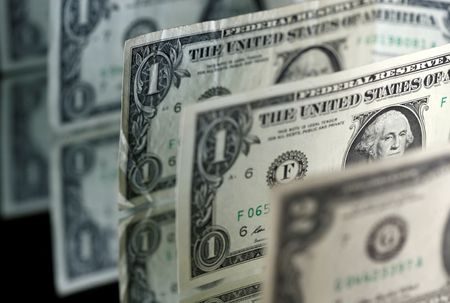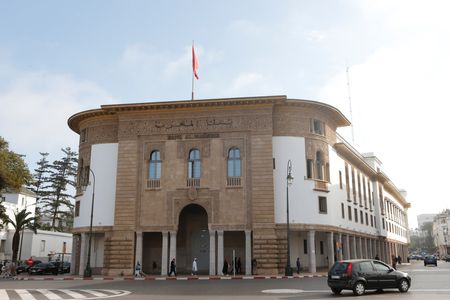By Rae Wee
SINGAPORE (Reuters) -The U.S. dollar traded in a tight range on Tuesday after a brief fall at the start of the week, as investors watched out for any progress on talks ahead of an August 1 deadline for countries to strike trade deals with the U.S. or face steep tariffs.
The yen mostly held on to gains from the previous session following results from a weekend upper house election in Japan that proved no worse than what had already been priced in, with focus now on how quickly Tokyo can strike a trade deal with Washington and Prime Minister Shigeru Ishiba’s future at the helm.
The Japanese currency was last a touch weaker at 147.57 a dollar, after rising 1% on Monday in the wake of the election outcome.
The bruising defeat suffered by Ishiba and his ruling coalition also drew just a modest response in the broader Japanese market, which returned from a holiday. [JP/] [.T]
“The initial relief for the yen that the ruling coalition did not lose even more seats and that Prime Minister Ishiba plans to hang on to power is likely to prove short-lived,” said MUFG senior currency analyst Lee Hardman.
“The pick-up in political uncertainty in Japan could complicate reaching a timely trade deal with the U.S., posing downside risks for Japan’s economy and the yen.”
With just slightly more than a week to go before the August 1 deadline, U.S. Treasury Secretary Scott Bessent said on Monday that the administration is more concerned with the quality of trade agreements than their timing.
Asked whether the deadline could be extended for countries engaged in productive talks with Washington, Bessent said President Donald Trump would make that decision.
Uncertainty over the eventual state of tariffs globally has been a huge overhang for the foreign exchange market, leaving currencies trading in a tight range for the most part, even as stocks on Wall Street have scaled fresh highs.
“Nothing that happens on August 1 is necessarily permanent, so long as the U.S. administration remains willing to talk, as was indicated in Trump’s letters from two weeks ago,” said Thierry Wizman, global FX and rates strategist at Macquarie Group.
The dollar was last steady after slipping in the previous session due in part to the yen’s rise and a dip in U.S. Treasury yields, leaving sterling trading 0.13% lower at $1.3474.
The euro eased slightly to $1.1689, with focus also on a rate decision by the European Central Bank later this week, where expectations are for policymakers to stand pat on rates.
The European Union is exploring a broader set of possible counter measures against the United States as prospects for an acceptable trade agreement with Washington fade, according to EU diplomats.
Against a basket of currencies, the dollar rose slightly to 97.882, having fallen 0.6% on Monday.
Also weighing on investors’ minds were worries about the Federal Reserve’s independence, given Trump has repeatedly railed against Chair Jerome Powell and urged him to resign because of the central bank’s reluctance to cut interest rates.
“Our base case remains that solid U.S. data and a tariff- driven rebound in inflation will keep the FOMC on hold into 2026, and that the resulting shift in interest rate differentials will drive a continued rebound in the dollar in the next few months,” said Jonas Goltermann, deputy chief markets economist at Capital Economics.
“But that view is clearly at the mercy of the White House’s whims.”
Elsewhere, the Australian dollar eased to $0.65215, while the New Zealand dollar fell 0.09% to $0.5963.
Minutes of the Reserve Bank of Australia’s latest policy meeting out on Tuesday showed policymakers judged that lowering interest rates for a third time within four meetings was not consistent with the strategy of a cautious and gradual easing.
(Reporting by Rae Wee and Ankur Banerjee; Editing by Shri Navaratnam and Rachna Uppal)









